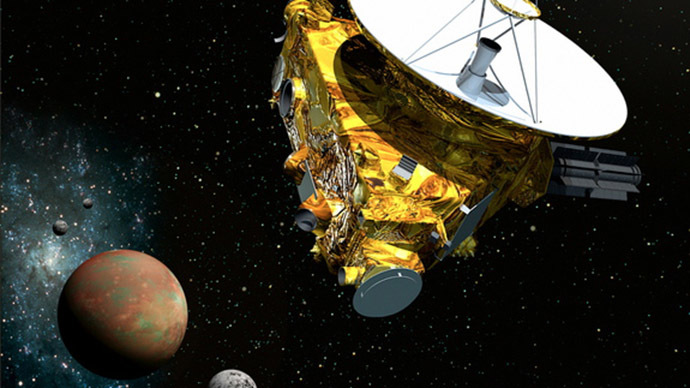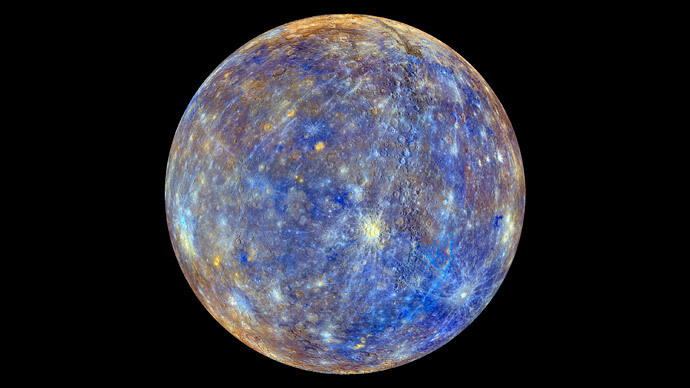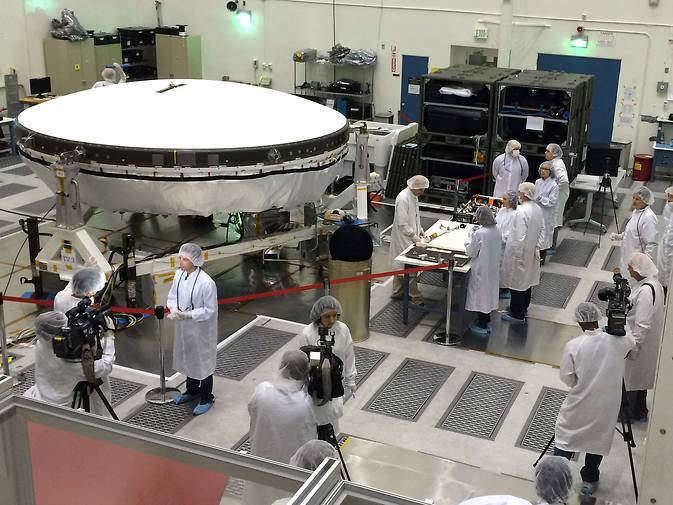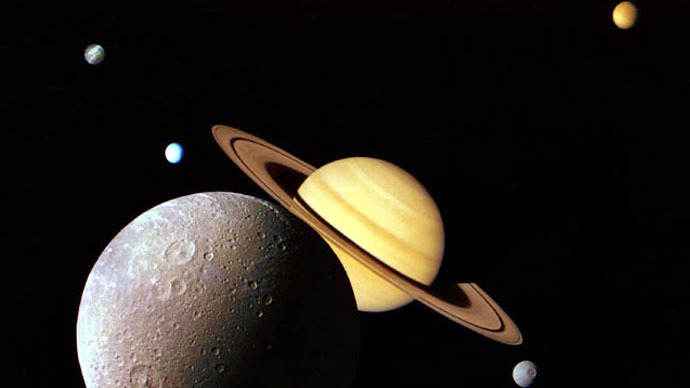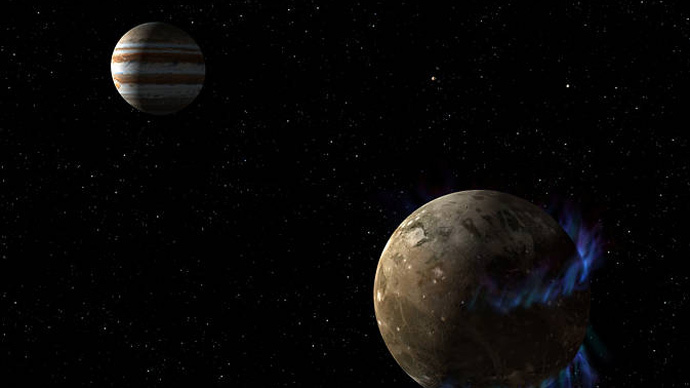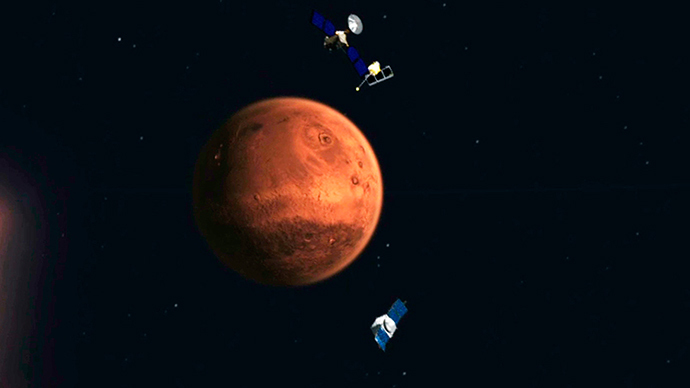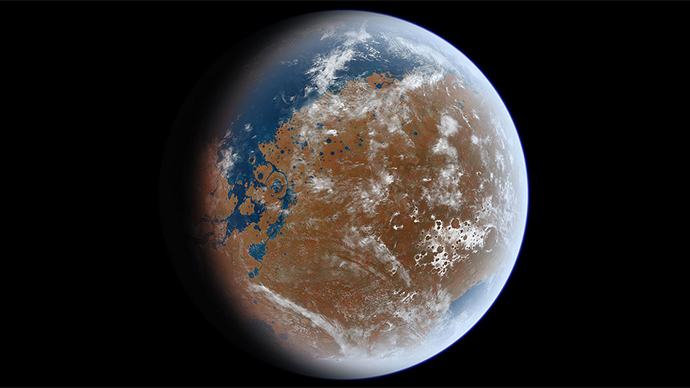Home » Astronomy
Bacteria, algae to produce oxygen on Mars
Mars at the boundary between darkness and daylight, with an area including Gale Crater beginning to catch morning light.
NASA mulls using bacteria and algae to produce oxygen on Mars, as a 2030 deadline for sending humans to the red planet looms.
“This is a possible way to support a human mission to Mars, producing oxygen without having to send heavy gas canisters,” chief Techshot scientist,...
First views of Pluto's tiniest moons emerge
As NASA’s Pluto probe nears the planet, it managed to grab some spectacular photos of its small moons for the first time. The New Horizons spacecraft is now in position to view the entire Pluto family.
“Detecting these tiny moons from a distance of more than 55 million miles is amazing, and a credit to the team that built our LORRI long-range camera and John Spencer’s team of moon and ring hunters,”...
Russia invites China to create moon base
Russia’s Deputy Prime Minister Dmitry Rogozin, second left, and Vice Premier of the State Council of the People’s Republic of China Wang Yang, second right, meet in Hangzhou, China.
Moscow may team up with Beijing to create a scientific station on the Moon. The challenge for Russia is to build its own space station by 2024 to achieve its lunar exploration goals.
According to Russian Deputy...
Astonishing images of Mercury captured by NASA spacecraft before smashing into planet
As Judgment Day approaches for NASA’s Messenger probe, stunning new pictures have emerged of the planet it is set to crash into on Thursday: Mercury.
The incredible close-up shots show our solar system’s smallest planet as never before.
The psychedelic appearance is explained by NASA overlaying the pictures from the spacecraft’s Visual and Infrared Spectrometer (Virs) onto a black and white...
Humanity must travel to space or die out: Stephen Hawking
Theoretical physicist and cosmologist Stephen Hawking warns that if the human race does not leave the planet and start to live in space, humanity will die out.
The renowned British scientist made the comments while giving a holographic a speech at the Sydney Opera House in Australia, the Independent reported on Monday.
“We must continue to go into space for the future of humanity,” Hawking...
NASA offering $18,000 for human lab rats to stay in bed
NASA will pay $18,000 to anyone prepared to stay in bed for 10 weeks and submit to a gruelling regime of tests for more than three months. The only criteria are the candidates have to be healthy and American citizens.
Scientists will constantly examine the lucky ones, who are selected, for 70 days. The research is being carried out to simulate how effective exercise is on astronauts, who lose cardiovascular,...
Universe expanding slower than thought
In this image, captured by the Gemini Observatory, shows at least three recent supernovas exploding on camera for the first time on May 21, 2008. It is suspected that these interactions sparked the formation of massive stars and the resulting fury of supernovae activity in this galaxy.
The universe may not be expanding since the Big Bang as fast as it was previously thought, astronomers say.
The discovery...
Alien Life will be found by 2025 - Top NASA Scientist
A high-ranking scientist with the National Aeronautics and Space Administration (NASA) has predicted that human beings will find signs of alien life by 2025.
“I think we’re going to have strong indications of life beyond Earth within a decade, and I think we’re going to have definitive evidence within 20 to 30 years,” The Independent quoted NASA chief scientist Ellen Stofan...
NASA joins Texas Rocket company in bid to reach Mars in only 39 Days
NASA announced it will partner with a variety of companies in new attempts to create more advanced space technology, including a new engine that could get humans to mars in less than 40 days.
The Texas-based Ad Astra Rocket company, a member of NASA’s 12 Next Space Technologies for Exploration Partnerships (NextStep), boasted their VASIMR engine can get humans to Mars in 39 days.
The engine rocketed...
NASA Tests Flying Saucer With Sights Set on Mars in 2020
Members of the media got an up-close look at LDSD flight-test vehicles currently in preparation in the clean room at NASA-JPL on March 31.
Thought they were just the stuff of science fiction movies? Not if NASA has anything to say about it. Agency researchers are developing a spacecraft that looks just like a flying saucer, with the hopes of helping a manned mission to Mars one day land softly on the...
Jupiter destroyed solar system’s young planets, scientists say
Jupiter’s large orbital journey across the early solar system may have cleared the way for the oddball arrangement of our planetary system, scientists say, even to the point of destroying burgeoning young planets.
Researchers at the California Institute of Technology created a model for the formation of Jupiter and Saturn, dubbed ‘Grand Tack,’ which shows Jupiter’s migration towards...
Jupiter moon Ganymede could have ocean with more water than Earth
In this artist’s concept, the moon Ganymede orbits the giant planet Jupiter.
New data suggests Jupiter’s moon Ganymede, the largest in the solar system, has an underground ocean which contains more water than all of Earth’s surface water combined, according to NASA.
NASA scientists were able to use the Hubble Space Telescope to collect more than seven hours of data about the auroral belts...
Dry ice on Mars may help colonize red planet, research says
A new way of generating energy could potentially power human colonies on Mars, a new study claims. This is thanks to nothing more than dry ice, which is abundant on the red planet, according to recent research.
Since man wants to start colonizing the place within the next few decades, we need all the help we can get. This could also have profound implications on planning. For now, we’re only considering...
NASA: Mars once had ocean bigger than Arctic
Analysis of water residue in Martian ice caps indicates that the Red Planet was once, at least partly, blue. Billions of years ago, Mars had a body of water that held more water than Earth’s Arctic Ocean, according to a NASA study published Thursday.
“Our study provides a solid estimate of how much water Mars once had, by determining how much later was lost to space,”said Geronimo Villanueva,...
Supermassive black hole swallows accepted theories
The newly-spotted black hole questions the rate at which they grow.
Astronomers have discovered a black hole that is 12 billion times more massive than the sun.
The new finding, described in a study published in science weekly Nature on Wednesday, could challenge a generally accepted theory about how black holes are formed.
The supermassive black hole, estimated to have been formed only 875 million...

